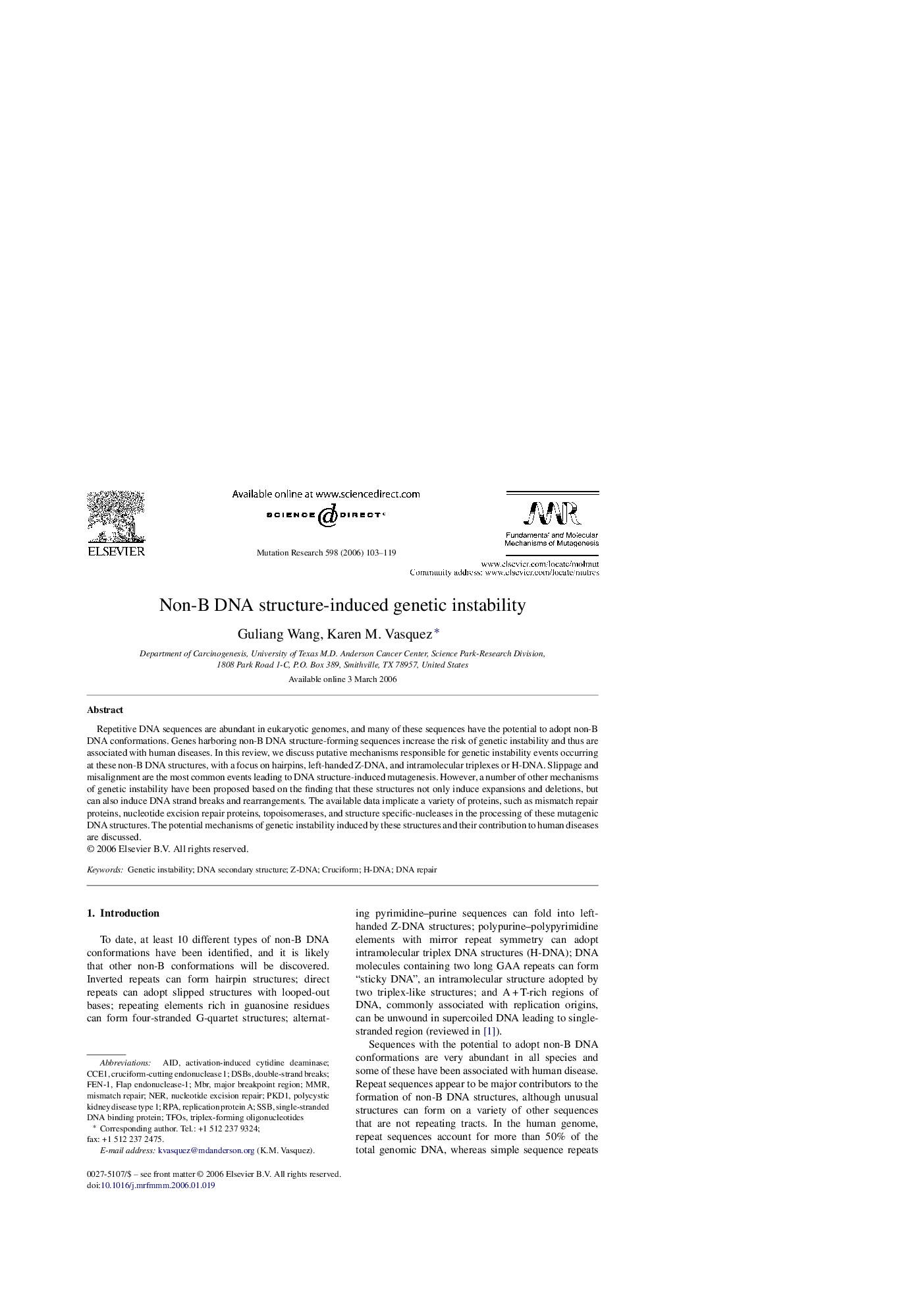| Article ID | Journal | Published Year | Pages | File Type |
|---|---|---|---|---|
| 2147642 | Mutation Research/Fundamental and Molecular Mechanisms of Mutagenesis | 2006 | 17 Pages |
Abstract
Repetitive DNA sequences are abundant in eukaryotic genomes, and many of these sequences have the potential to adopt non-B DNA conformations. Genes harboring non-B DNA structure-forming sequences increase the risk of genetic instability and thus are associated with human diseases. In this review, we discuss putative mechanisms responsible for genetic instability events occurring at these non-B DNA structures, with a focus on hairpins, left-handed Z-DNA, and intramolecular triplexes or H-DNA. Slippage and misalignment are the most common events leading to DNA structure-induced mutagenesis. However, a number of other mechanisms of genetic instability have been proposed based on the finding that these structures not only induce expansions and deletions, but can also induce DNA strand breaks and rearrangements. The available data implicate a variety of proteins, such as mismatch repair proteins, nucleotide excision repair proteins, topoisomerases, and structure specific-nucleases in the processing of these mutagenic DNA structures. The potential mechanisms of genetic instability induced by these structures and their contribution to human diseases are discussed.
Keywords
SSBTFOsFEN-1PKD1Z-DNARPAActivation-induced cytidine deaminaseMMRMBRDSBsNERH-DNATriplex-forming oligonucleotidesGenetic instabilityDNA repairnucleotide excision repairmismatch repairreplication protein ADNA secondary structuredouble-strand breaksFlap endonuclease-1major breakpoint regionSingle-stranded DNA binding proteinCruciformAID
Related Topics
Life Sciences
Biochemistry, Genetics and Molecular Biology
Cancer Research
Authors
Guliang Wang, Karen M. Vasquez,
